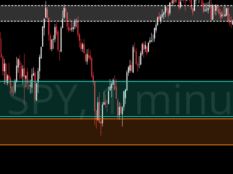Portfolio Management 101
I’m Meta Matt, Director of Education and welcome to PB University LITE! This is a 50 Class Trading 101 Series geared towards both new and veteran traders alike! We go over everything from Trading Psychology, Technical Analysis, and Options Trading to Commodity Trading, Forex, and more!! This 50 Class series is not designed be taken in order, it is instead designed for traders to browse and pick which classes interest them. I will include the list of classes at the bottom of this page.
Start Trading With Webull: Free Stock Shares
Custom Trading Indicator DISCOUNT: Try StocksBuddy Today
Get A Trading Coach, Premium Alerts, Education, and Community:
1 Month Membership
90 Days (Save 10% Per Month)
1 Year (Save $279)
First things first, you need to decide on your investment goals. Are you looking for short-term gains, long-term growth, or both? This will help you determine the right mix of investments for your portfolio. Some people may prefer to put more money into short-term trades and take advantage of quick gains, while others may prefer to put more money into long-term investments and let compound interest work for them over time. Most like to do a little of both. It’s all about finding the right balance for you. Your age, trading psychology, risk tolerance, current market conditions, income, financial goals, and time that you’re able to spend trading all are factors to consider when it comes to portfolio management.
Short-term investments usually come with a higher level of risk, as short-term trades typically move faster, meaning they are more volatile, which means they can go up faster, but can also go down faster. That’s why they have the potential for quicker and larger rewards, but quicker and larger losses if risk isn’t managed properly. On the other hand, long-term investments tend to be more stable, but take time and patience.

Once you figure out how much of your portfolio you are willing to put into short term investments, and what percentage you want to put into long term investments, the next step is to create a Trading Plan.
Once your plan is complete it is important to keep in mind these 3 things…
Number one, it is always good to have money designated to be in your portfolio, but out of the market. Meaning having cash on the side. You don’t want to have 100% of your trading portfolio invested in assets, because what happens if something huge happens in the market, like with AMC or Dogecoin, and you want to get involved. Well if 100% of your portfolio is invested in assets, then you will either have to sell some of your assets, or put more money into your trading account, meaning possibly risking your savings or retirement money in the market, or just missing out on it all together.. So remember, it’s good to have cash on the side for big events, so that you don’t have to put your savings account into the market, or miss out on an opportunity.
Number two, Rebalancing: Your short term account might grow quicker than your longer term account. To ensure your portfolio stays aligned with your investment goals, it's important to regularly review and rebalance your portfolio. In this example that would mean taking profits on your short term account, and putting some of it into longer term investments, or your bank account.
Number 3. Keep an Eye on the markets and be prepared to make changes to your portfolio if necessary. For example I tend to go heavier into short term investments during bear markets, and longer term investments during bull markets.

PB University LITE Class List
1) Trading Terminology
2) Stock Market Indices
3) Common, Preferred, and Penny Stocks
4) Diversification of Assets
5) Fundamental Analysis Made Easy
6) Technical Analysis Made Easy
7) Risk Management In The Market
8) Portfolio Management
9) How To Follow Market News
10) Trading Psychology
11) Options Explained
12) The Greeks In Options Trading
13) How To Short Sell Options
14) Covered CALLS
15) Spread Trading
16) Online Brokers for Options Trading
17) Implied Volatility Calculators & Tools
18) Protective PUTS
19) Iron Condors
20) Straddles
21) Reading Level 2
22) Taxes
23) Trading Psychology Techniques
24) The Art Of Trading
25) Becoming A Jedi In The Stock Market
26) Futures Trading Explained
27) Commodity Trading 101
28) Regulatory Environments
29) How To Become A Millionaire
30) $100K In 100 Days
31) Wash Sale Rule
32) Behavioral Finance Part 1
33) Behavioral Finance Part 2
34) 5 Charting Indicators
35) Fair Value Gap
36) Insider Trading and Market Manipulation
37) Stock Chart Types
38) Moving Averages 101
39) Base vs Precious Metals
40) Electricity Trading 101
41) Trading Brokers 101
42) 5 Trading Strategies
43) 85% Trading Rule
44) Are Win Rates A Scam?
45) Futures Trading 101
46) ATR Indicator Strategy With The Greeks
47) MACD Indicator 101
48) Bollinger Bands Indicator 101
49) Wedges, Triangles, Flags and Pennants
50) RSI Divergence 101



